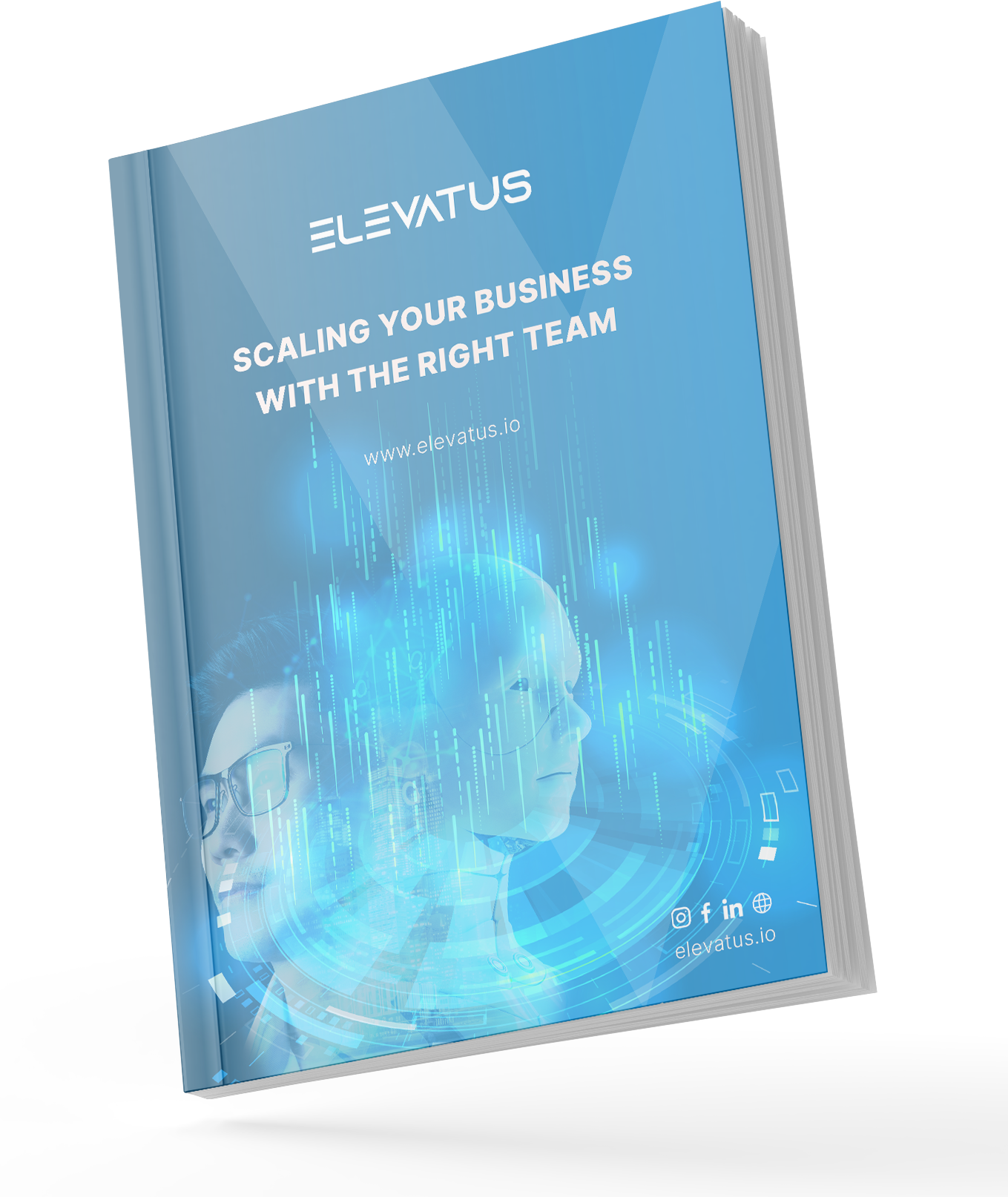
AI for Hiring
Master the Art of Hiring: The Cutting-Edge Impact of AI Candidate Sourcing
March 1, 2024



Kiran Kazim
Content Writer
Ever feel like you’re on a never-ending hunt for the perfect candidate, each time hoping to find “the one” who fits your job description perfectly?
You listen. You engage. You even laugh at their jokes.
However, at the back of your mind, you’re calculating the odds of this being the match you’ve been searching for.
Whereas, in reality, your inbox is overflowing. Your coffee cup is empty (again)! And you’re starting to think that maybe, just maybe, there’s a magic bullet for finding the perfect candidate without the soul-crushing monotony. And then there’s the whisper in the industry, the rumor that’s been making rounds: AI candidate sourcing is changing everything. But is it just another buzzword, or is there substance behind the hype? Could it be that the traditional, painstaking process of recruitment is about to get a much-needed overhaul, or are we all just grasping at straws, hoping not to drown in a sea of CVs?
Let’s dive into the world of AI candidate sourcing and see if it really is the lifeline recruiters have been waiting for or just another pipe dream in the complex world of talent acquisition.
Build a candidate experience that comes first
See how our award-winning ATS can help you deepen your talent pool and fill positions faster by building an immersive and modern candidate experience.
Request a demoTable of Contents
The Impact of Technological Innovations in the Evolving Recruitment Landscape


The recruitment landscape is undergoing a profound transformation thanks to rapid technological advancements. The traditional approach of posting a job listing and passively waiting for applications is quickly becoming obsolete.
Today, recruiters have at their disposal a plethora of digital tools aimed at making the hiring process more efficient, from leveraging social media platforms to utilizing advanced job boards. However, the real breakthrough has been the introduction of AI candidate sourcing. This innovation is not merely a trend; it represents a fundamental shift in how talent acquisition is approached.
Overwhelmingly, 89% of HR professionals believe that AI will improve the applicant application process, underscoring the widespread optimism about its impact. By leveraging artificial intelligence, recruiters can now parse through data with unprecedented speed and accuracy, identifying potential candidates who not only fit the job description but also align with the company’s culture and values. This technological leap forward promises to make the daunting task of finding the perfect candidate not just faster, but smarter, ushering in a new era of efficiency and effectiveness in recruitment.
The Remarkable Transformation of Candidate Sourcing


The way we search for and engage potential job candidates has dramatically transformed over the years, reflecting broader shifts in technology and communication methods. This evolution has taken us from the days of newspaper job ads to the digital frontier of automated candidate sourcing, marking a significant shift in efficiency and effectiveness in recruitment strategies.
The Fascinating Journey of Candidate Sourcing Through the Ages
The journey of candidate sourcing began long before the internet became widespread. Initially, employers relied on word-of-mouth, newspaper classifieds, and public postings to attract applicants. As the digital age dawned, online job boards like Monster and Indeed, as well as professional networking sites such as LinkedIn, revolutionized how employers and candidates found each other. These platforms allowed for a wider reach and more targeted searches but still required manual review, which was time-consuming and often ineffective at filtering the best candidates from the vast applicant pools.
The introduction of applicant tracking systems (ATS) helped organize and streamline some of these processes, but it wasn’t until the advent of artificial intelligence (AI) that the real potential for innovation in candidate sourcing was unlocked. AI has brought about a more dynamic, predictive approach to sourcing candidates, leveraging data analytics and machine learning to match qualifications and experience with job requirements more accurately than ever before.
Ancient Times: Recruitment begins with selecting skilled labor in civilizations like the Indus Valley.
Headhunting to Formal Recruitment: Evolves from literal headhunting to organized labor recruitment for large projects, like Egypt’s pyramids.
Resumes and Exams: Ancient Rome introduces resumes; Imperial China starts using exams for civil service roles.
WWII Impact: Modern recruitment agencies emerge to address labor shortages, empowering women and aiding veterans.
Digital Transformation: Computers and the internet in the 1980s-90s revolutionized job postings and applications.
Social Media and ATS: 2000s onwards, social media and applicant tracking systems streamline candidate sourcing.
AI Revolution: AI and machine learning modernize screening and assessment, improving recruitment efficiency.
Future Trends: Ongoing advancements in AI, social media, and mobile tech will further refine recruitment strategies.
Traditional vs. AI-Driven Candidate Sourcing Unveiled
Traditional sourcing techniques, while foundational to the recruitment process, often suffer from limitations in speed, scope, and precision. Manual screening of resumes is not only labor-intensive but also prone to human bias, potentially overlooking qualified candidates due to unconscious biases or simply human error. Furthermore, these methods can be inefficient at parsing through the nuances of a candidate’s experience and skills, leading to a mismatch between job requirements and applicant capabilities.
In contrast, using AI for candidate sourcing represents a leap forward in addressing these challenges. AI algorithms can analyze vast datasets — including resumes, social media profiles, and online portfolios — to identify candidates who best match specific job criteria. This process is not only faster but also more accurate, significantly reducing the chances of human error and bias. AI can also predict candidate suitability for a role based on patterns and trends in data that may not be immediately apparent to human recruiters.
Moreover, AI-driven sourcing tools can continuously learn from recruitment outcomes, improving their accuracy and effectiveness over time. This means that the more an organization uses AI in its recruitment processes, the smarter and more efficient those processes become. For instance, an AI system can learn from each hiring decision, refining its criteria for candidate selection based on real-world success rates, thereby enhancing the quality of hires over time.
A striking example of the efficiency of AI in recruitment is shown when companies use EVA-REC, an award-winning AI recruitment tool that enables you to find, hire, and build talented workforces. EVA-REC helps you build modern career pages that convert, integrate with world-class technology providers, automatically post jobs on 2,000+ global job boards, filter resumes fast, rank candidates in order of qualification, and seamlessly collaborate with teammates – all in one single, integrated solution.
Not to mention, with EVA-REC, companies have experienced a remarkable 96% decrease in hiring costs. This significant reduction in expenses, alongside enhancements in the quality of candidates sourced, highlights the transformative impact of AI on modern recruitment practices.
Below is a concise table comparing traditional sourcing techniques with AI-driven approaches to candidate sourcing:
| Feature | Traditional Sourcing Techniques | AI-Driven Approaches |
| Speed | Time-consuming due to manual processes. | Rapid analysis and processing of data. |
| Scope | Limited to accessible databases and networks. | Access to vast datasets across multiple platforms. |
| Accuracy | Prone to human error and bias. | High precision in matching candidates to job criteria. |
| Efficiency | Labor-intensive screening of resumes. | Automated screening significantly reduces manual effort. |
| Bias | Potential for unconscious bias in selection. | Reduced bias through objective data analysis. |
| Predictive Analysis | Lacks predictive capabilities. | Can predict candidate success in roles using data trends. |
| Learning and Adaptation | Static, with no improvement over time. | Continuously learns and improves from hiring outcomes. |
| Candidate Experience | Can be impersonal and generic. | Personalized engagement based on candidate data analysis. |
| Cost-effectiveness | Potentially high, with lower ROI due to inefficiencies. | Higher initial investment, but greater ROI through efficiency. |
Unraveling the Magic Behind Candidate Sourcing Automation


Dive deep into the world of AI candidate sourcing, a groundbreaking approach that’s reshaping how we connect with top talent. Discover the nuts and bolts of this innovative process and the cutting-edge technologies driving its success.
What Exactly Is AI Candidate Sourcing? The Inner Workings Revealed
At its core, AI candidate sourcing is an advanced technique that leverages artificial intelligence to streamline and enhance the recruitment process. This method goes beyond traditional sourcing by utilizing sophisticated algorithms to search, identify, and engage potential candidates who are the best fit for specific job roles. Unlike manual sourcing, which relies heavily on human effort and is often constrained by time and potential biases, AI candidate sourcing automates the grunt work. It sifts through massive datasets — including online profiles, resumes, and job portals — with incredible speed and accuracy.
This automation is powered by a series of complex mechanisms. Machine Learning (ML), a subset of AI, enables the system to learn from data patterns and improve over time, making each search smarter than the last. Natural Language Processing (NLP) allows AI to understand human language within resumes and job descriptions, matching candidates to roles based on skills, experience, and other relevant factors. The result? A highly efficient, bias-reduced process that connects employers with the cream of the crop, all while slashing time-to-hire and boosting the overall quality of hires.
Core Technologies of Candidate Sourcing AI Explained in Detail
AI candidate sourcing isn’t just a single technology; it’s a symphony of advanced tech working in harmony to transform recruitment. Here are the key players:
- Machine Learning (ML)
Machine Learning algorithms improve through experience. In the context of candidate sourcing, they analyze data from previous hiring cycles, including which candidates were successful in their roles and why. This analysis allows ML models to identify patterns and correlations between candidate attributes and job performance.
Example: A tech company uses an ML-powered recruitment tool to fill software engineering positions. Over time, the tool learns that candidates with experience in specific programming languages and collaborative project work tend to succeed more in their roles. It then prioritizes candidates with these attributes in future searches, improving the quality of candidates shortlisted.
- Natural Language Processing (NLP)
NLP enables computers to understand human language as it is spoken or written. In recruitment, NLP translates the complex, varied language of resumes and job descriptions into structured data that can be easily analyzed. This includes parsing job titles, skills, educational background, and experience.
Example: A recruitment platform implements NLP to decode and match job descriptions with resumes. For instance, it can understand that a “Senior Developer” in one company might be equivalent to a “Lead Programmer” in another, and match candidates accordingly, despite the different job titles.
Recruit top talent in local languages
Expand your reach, grow your talent pool and target new markets by recruiting in multiple languages. Create fully localized experiences — from job requisition to job offer — in 9 languages.
Request a demo- Predictive Analytics
Predictive analytics uses historical data to make predictions about future events. In candidate sourcing, it assesses past hiring decisions and their outcomes to forecast how likely a candidate is to succeed in a role. This involves analyzing patterns in employee longevity, promotion rates, and job performance.
Example: A retail chain employs predictive analytics to identify characteristics of sales associates who have historically performed well and stayed with the company long-term. It then scores potential candidates against these characteristics, helping recruiters focus on applicants most likely to thrive and reduce turnover.
- Semantic Search
Semantic search goes beyond keyword matching to understand the meaning behind words in context. This allows for a more nuanced search capability, recognizing synonyms, industry jargon, and related concepts. It can match candidates to jobs even if exact terms are not used based on the underlying meaning.
Example: An engineering firm is seeking a “civil engineer with hydrology experience.” Semantic search understands that relevant candidates might list “water resource management” instead of “hydrology” on their resumes. It identifies and ranks these candidates highly, even though the exact term wasn’t used, ensuring a better match between job requirements and applicant experience.
Unlocking the Power of AI in Talent Acquisition


Dive into the transformative advantages of integrating artificial intelligence into your recruitment strategy. Discover how AI not only streamlines the hiring process but also elevates the quality of your talent pool.
How AI Boosts Efficiency and Speed
The magic of AI algorithms is in their unmatched capacity to sift and analyze heaps of data far beyond what any human recruiter could manage. Picture this: you’re faced with a towering stack of resumes, a task that could easily swallow up weeks of your time. Now, imagine an AI system effortlessly gliding through this massive pile of data in just a few minutes. This isn’t an exaggeration; it’s the actual power of AI in recruitment as we see it today.
The efficiency gains from implementing AI in the recruitment process are staggering. For instance, an AI-powered tool can review up to 10,000 resumes in the time it would take a recruiter to get through just one. This incredible speed doesn’t just cut down on the hiring timeline; it fundamentally transforms how recruiters allocate their time. Instead of getting bogged down in the minutiae of initial screenings, recruiters can focus on engaging with candidates, crafting strategic hiring plans, and building relationships that enrich the candidate experience.
Supercharging Recruitment Success with ChatGPT and AI Tools
Furthermore, the automation of routine tasks extends beyond just resume screening. AI-driven chatbots, for example, are revolutionizing candidate engagement. These chatbots can handle a myriad of basic inquiries from candidates, providing instant responses 24/7. This not only enhances the candidate experience by ensuring their questions never go unanswered but also frees up recruiters’ time from fielding these queries manually.
Let’s look at the real impact here. The HR world is really getting a lot out of using AI for hiring. A recent report by LinkedIn showed that companies jumping on the AI bandwagon early have cut their costs for screening each candidate by a whopping 75%. And that’s not all. They’re also seeing a 35% drop in how often employees leave, thanks to better hiring matches. This goes to show just how big a difference AI candidate sourcing can make, not just in saving money but also in keeping teams stable and happy. It’s a breakthrough for speeding up and smoothing out the whole hiring process.
In essence, the efficiency and speed offered by AI in candidate sourcing are not just about doing things faster but also about doing them smarter. By automating the labor-intensive parts of the recruitment process, AI candidate sourcing enables recruiters to dedicate more time to the human aspect of their role — from strategic decision-making to nurturing candidate relationships.
Elevating Talent Quality with The AI Advantage
AI doesn’t just work faster; it works smarter. AI delves deep into vast pools of data, absorbing lessons from every hiring choice made, fine-tuning its ability to spot not just the candidates who look good on paper but those who are truly poised for success in their roles and within the company culture. This isn’t just about filling positions; it’s about finding the perfect fit, a synergy between candidate capabilities and job demands that leads to a harmonious workplace. The result? Employees who are more than just satisfied—they’re engaged and thriving, driving up performance levels and drastically reducing the likelihood of early exits.
But let’s ground this in reality with some numbers. According to a report from the National Business Research Institute, companies that leverage AI in recruitment have seen a 35% reduction in turnover rates, a testament to the technology’s knack for enhancing fit and satisfaction. Also, Deloitte did a study that found companies using AI for hiring are filling jobs 68% faster. They said “AI-enabled recruitment” really speeds things up. This shows just how much using AI can help not just make hiring quicker but also lead to big wins like doing better in business and improving how much money the company makes.
Scaling Your Business With The Right Team
Discover how to smartly scale your business by assembling the right team, crafting a successful plan, overcoming challenges, and employing effective communication strategies in this comprehensive eBook.
Download Free!

In essence, the AI edge in elevating talent quality isn’t just about automating processes; it’s about enriching the ecosystem of the workplace with well-matched individuals who are likely to grow, contribute, and stay. This intelligent matchmaking between candidates and roles promises a future where turnover is a rarity, and every hire is a step toward organizational success.
Tapping Into the Hidden Talent Pool
One of the coolest things about using AI in hiring is how it helps find people who aren’t even looking for a job but would be open to the right offer. These are what we call passive candidates. They’re out there, probably not checking job ads or sending out resumes, but they might be the perfect fit for a job you’re trying to fill. AI is like a super-smart detective that can go through places like LinkedIn, online portfolios, and other websites to find these folks based on what skills and experience they have.
This matters a lot because most people aren’t actively looking for a new job, but many would be willing to talk if an interesting opportunity came up. In fact, research shows that only about 30% of people are actively job hunting. Even more impressive, research suggests that people who weren’t actively looking for a job but got hired anyway tend to be really great for businesses, bringing new ideas and making a big positive impact.
A huge 73% of the workforce is made up of passive candidates, who aren’t actively looking for a role.
So, by using AI candidate sourcing tools to find and talk to these passive candidates, companies can really up their game. They’re not just waiting around for the right person to apply; they’re going out and finding them. This means they end up with a better mix of applicants and a higher chance of finding someone who’s just the right fit for the job. It’s a smarter way to hire that can lead to having a team full of star players.
Making Fairness the Foundation of Hiring
Right now, in the world of hiring, there’s a big push to make sure everyone gets a fair shot, no matter their background. The great thing about AI is that it can help with this. Instead of relying on gut feelings or first impressions, which can sometimes be biased without us even realizing it, AI looks at the facts. It checks out candidates based on their skills and what they’ve done, using clear rules that don’t care about where someone comes from or what they look like.
But here’s the catch: AI learns from the information it’s given. So, if the data it starts with has some biases, there’s a risk it might keep those going. That’s why people who make and use AI tools are really focusing on teaching them in a way that’s fair and doesn’t repeat old patterns of bias.
And guess what? When AI is used thoughtfully, it can significantly impact workplace diversity. In fact, 68% of recruiters believe that incorporating AI into the recruiting process can help eliminate unintended bias. This shift is monumental because it’s not just about hiring the best talent available; it’s about creating teams that bring a variety of perspectives and experiences to the table. This diversity isn’t only beneficial for the workplace atmosphere; it’s crucial for sparking creativity and fostering innovative solutions to challenges.


“Although AI systems may be biased in certain ways because of the data that they’re trained on, they don’t have personalities that display explicit prejudice or subconscious bias learned over time.” – Arun Sundararajan, a professor at NYU Stern School of Business
So, using AI in hiring isn’t just about filling jobs faster. It’s about making sure everyone gets a fair chance to be considered, breaking down old barriers, and bringing in people who might have been overlooked before. This way, companies aren’t just talking about being more inclusive—they’re actually doing it.
Implementing AI in Your Sourcing Strategy


As the recruitment landscape evolves, integrating AI into your sourcing strategy can be a game-changer. However, it’s not just about plugging in a new system and watching it go; there are challenges to navigate and best practices to follow to truly reap the benefits.
Tackling the Hurdles of AI Integration
Introducing AI into your hiring strategy isn’t just flipping a switch. It’s more like setting off on a journey where you’ll face a mix of tech puzzles, learning curves, and team dynamics. Let’s dive into these hurdles head-on, uncovering the twists and turns of bringing AI into the recruitment mix.
Make the right hires every time
Learn how our award-winning ATS can help you use AI and automation to save time, eliminate manual tasks, and hire at an enterprise scale – but without the complexity.
Request a demo- Understanding AI Capabilities: One of the first hurdles is getting a solid grip on what AI can and cannot do. It’s easy to fall for the hype and expect AI candidate sourcing to be a magic solution that solves all recruitment challenges overnight. In reality, AI is a tool that enhances and streamlines processes, but it requires clear objectives and realistic expectations to be effective.
- Data Quality and Availability: AI’s power is directly tied to the quality and quantity of data it can learn from. Poor data quality or a lack of comprehensive data can lead to less effective AI performance. This means organizations need to invest in collecting and curating high-quality data before they can expect their AI tools to deliver optimal results.
- Ethical and Bias Concerns: As mentioned earlier, there’s a risk of AI perpetuating existing biases if not carefully monitored. A study by MIT researchers found that some facial-recognition software had higher error rates for women and people of color, highlighting the need for diverse data sets and continuous testing to ensure fairness.
- Winning Over the Team: When you start talking about bringing AI into hiring, not everyone might be thrilled. Some folks might worry about their jobs or wonder if a machine can really help find the right people. It’s all about showing how AI is here to help, not take over.
- Learning New Tricks: Dropping AI into the mix means we’ve all got to learn some new stuff. Whether it’s figuring out new software or getting comfortable with letting data guide our decisions, it’s a bit of a learning curve for everyone involved.
- Tech Tangles: You’ve got your existing hiring tools and systems, and now you want to add AI into the mix. Sometimes, they don’t play nice together right off the bat. It might mean extra work to get them to gel or finding workarounds when they just won’t.
- Data Here, There, and Everywhere: In many places, information about candidates is all over the place. Getting it all in one spot so the AI can actually use it can feel like herding cats.
- Keeping Up as You Grow: What works for hiring a few people here and there might not hold up when you’re hiring by the dozens. Making sure your AI can handle more as your company or the number of applications grows is something to think about.
- Staying Up-to-Date: Just like your phone needs updates, AI does too. It needs to learn from new info and get better over time. This means someone’s got to keep an eye on it, making sure it’s doing its job right as things change.
- Keeping It Private: With all the rules about keeping personal information safe, you’ve got to make sure the AI isn’t stepping out of line. It’s about making sure you’re handling candidates’ info the right way.
- Who’s to Blame When AI Gets It Wrong?: If the AI decides not to move forward with a great candidate, figuring out how to handle those situations can be tricky. It’s important to have a plan for when things don’t go as expected and make sure there’s always a human in the loop making the final call.
Tackling these challenges head-on means being ready to adapt, learn, and sometimes even get a little creative. But getting through them can really pay off, making your hiring process smarter and more efficient.
Smart Moves for Smooth AI Adoption
Embracing AI in your recruitment process is a big step forward, but it’s not without its challenges. To ensure a seamless transition, there are smart strategies and practices worth following. Let’s explore the roadmap to successfully integrating AI candidate sourcing into your hiring efforts, ensuring you navigate the journey with confidence and ease.
- Start with a Clear Strategy: Before diving into AI, define what you want to achieve. Are you looking to speed up resume screening, enhance candidate engagement, or tap into passive talent pools? Setting clear goals will help you choose the right tools and measure success effectively.
- Ensure Data Integrity: Garbage in, garbage out, as the saying goes. Make sure your data is clean, comprehensive, and continuously updated. This might involve digitizing old records, standardizing data collection processes, or investing in data management tools.
- Prioritize Transparency and Ethics: Be upfront about your use of AI in recruitment processes. This includes informing candidates that AI tools are being used to screen applications and ensuring that there’s a human review element to avoid over-reliance on automation. Developing an ethical AI use policy can guide your efforts and reassure candidates and employees alike.
- Invest in Training: Don’t assume that your HR team will automatically know how to work with AI candidate sourcing tools. Provide training and resources to help them understand how AI can be used effectively and ethically. This includes understanding the limitations of AI and how to interpret its outputs in decision-making processes.
- Monitor and Adjust: AI is not a set-it-and-forget-it solution. Regularly review the performance of your AI tools, and be prepared to adjust your strategies based on feedback and results. This iterative approach ensures that your AI integration evolves in line with your recruitment needs and technological advancements.
Final Thoughts
AI candidate sourcing is opening doors to finding a wider variety of talented folks in a way that’s fair for everyone. As we start to get more comfortable with using AI in our hiring processes, it’s becoming pretty clear that this is the way forward. It’s all about using smart tech to tap into the huge pool of talent out there, making sure no good candidate goes unnoticed.
Looking to source top talent faster with advanced AI matching?
EVA-REC, a globally recognized and award-winning AI recruiting software, empowers companies around the world to source, attract, and hire top talent efficiently and at scale. Get ready to create compelling, modern career pages that effectively convert, integrate seamlessly with leading technology providers, and effortlessly post jobs across 2,000+ global job boards. With EVA-REC, you can quickly filter resumes, rank candidates by qualifications, and collaborate smoothly with your team members – all within a single, integrated platform, streamlining your entire recruiting process. Request a free demo today!
Frequently Asked Questions
What are some examples of AI candidate sourcing tools, and how do they differ?
LinkedIn and LinkedIn Recruiter are all about connecting with professionals. LinkedIn lets anyone post jobs and search for candidates, but LinkedIn Recruiter is a special version for hiring pros. It gives you extra tools to find and talk to people who aren’t even looking for a job. Recruit’em is different—it’s a free tool that helps you use Google to find candidates’ profiles across the web, like on LinkedIn or GitHub, by creating smart search strings. So, while LinkedIn tools are great for deep dives within their own huge network, Recruit’em helps you cast a wider net across the internet.
How can companies ensure the ethical use of AI in candidate sourcing?
Companies can stay ethical by being transparent about their use of AI, like letting candidates know when AI is being used in the recruitment process. They should also regularly check their AI tools to make sure they’re not biased. This means looking at the data, the AI is trained on and how decisions are made, then making adjustments as needed to ensure fairness.
What impact will the continued evolution of AI have on the future of recruitment and candidate sourcing?
As AI keeps getting better, it’s going to make finding and hiring the right people faster and more efficient. We’ll see AI candidate sourcing tools that are better at understanding what makes someone a good fit for a job and even predicting how well they’ll do. This means companies can hire smarter, not harder, focusing on candidates who are really likely to succeed and fit in with the team.
Turn top talent to employees fast
Hire, assess, onboard and manage top talent for every job. See how Elevatus streamlines everything; from acquire to new hire.
Request a demoAuthor



Kiran Kazim
Don't miss a thing!
Stay one step ahead. Subscribe and get the latest updates, news, and insights from Elevatus straight to your inbox.


![Balancing the Pros and Cons of Online Recruitment With the Right Tools [2024 Guide] | Elevatus An image of an HR manager defining the purpose of online recruitment to a new hire](https://www.elevatus.io/wp-content/uploads/2023/12/5-4.png)


